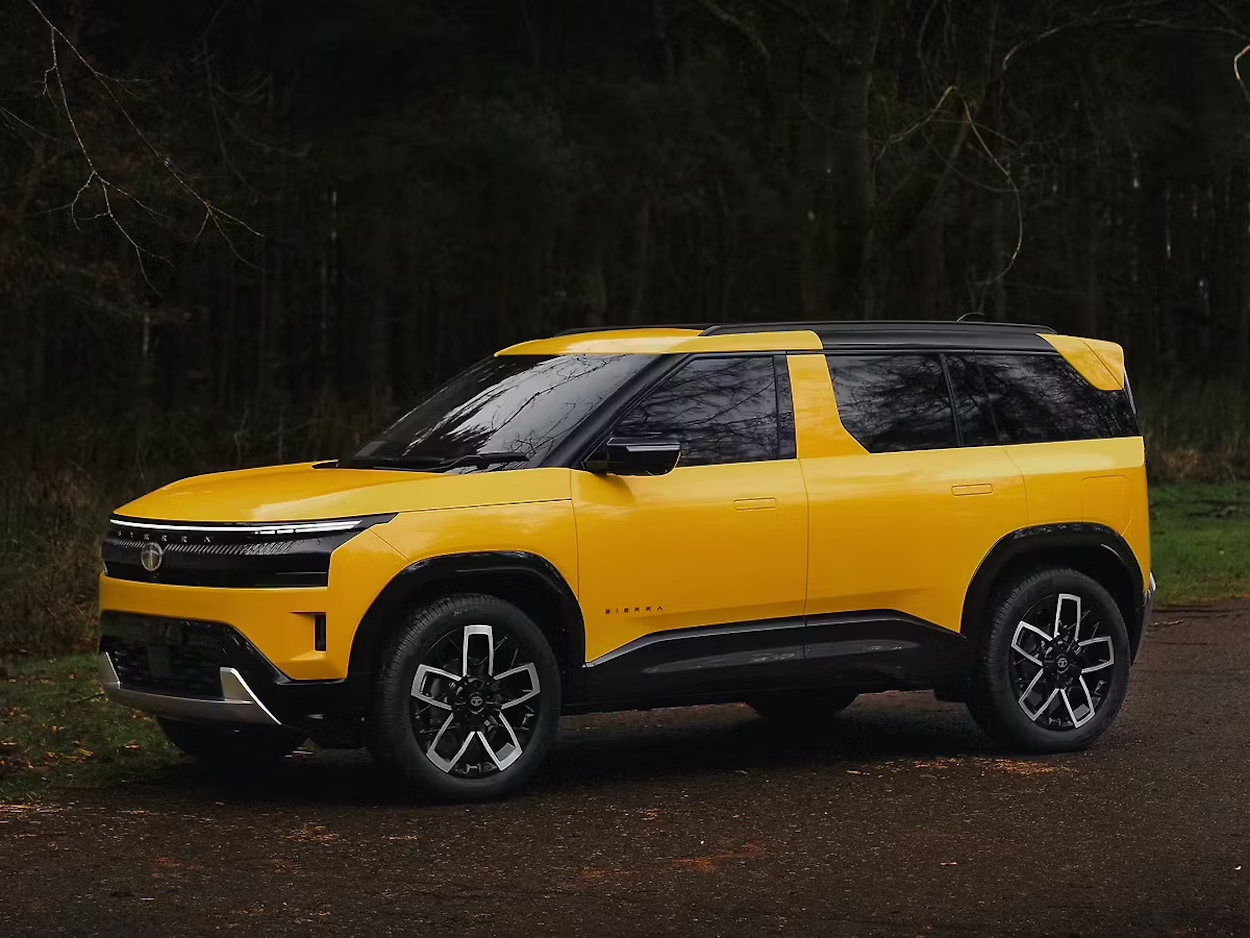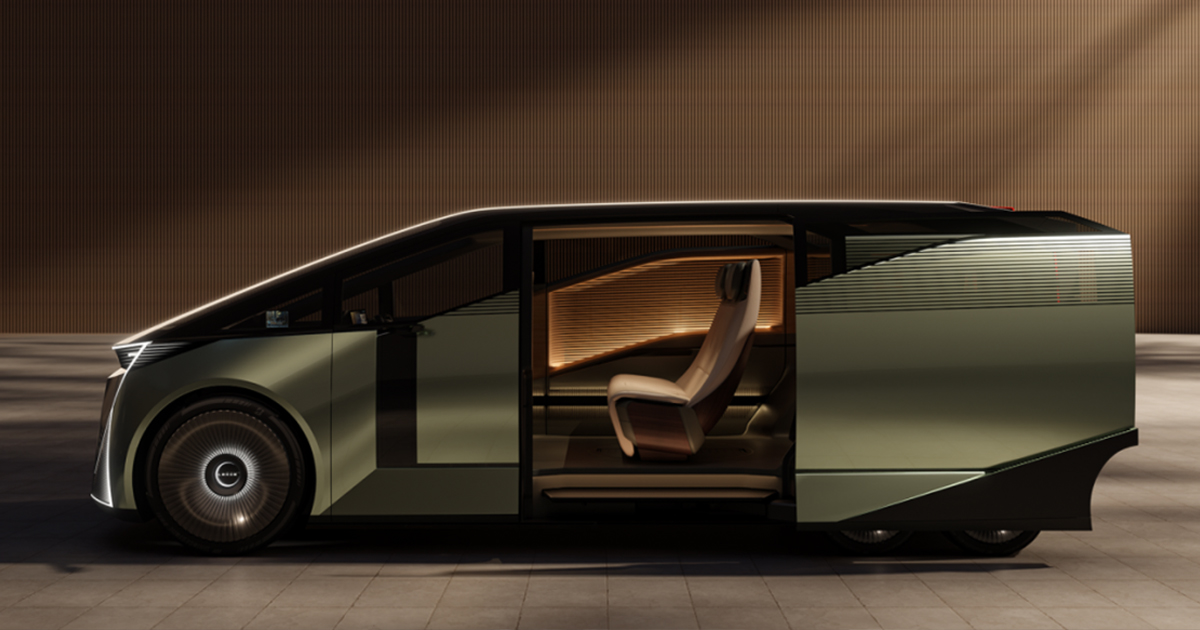In an era dominated by digital convenience and instant mobility, young people are redefining what car ownership means. For earlier generations, having a car was a luxury, a symbol of success or family stability. But in 2025, with rising transportation costs and the hustle of hybrid lifestyles, a car has evolved into something far more essential: a necessity. This guide discusses the 10 factors Gen Z looks for in a car. Our Gen Z car buying guide can come in handy if you are a young buyer trying to find the perfect car for yourself that suits your daily needs.
Public transportation, while ideal in concept, often fails to meet the dynamic and unpredictable needs of today’s fast-moving generation. Ride-sharing services are no longer the affordable hacks they once were. And for many Gen Zers and millennials juggling multiple roles, from students to freelancers, from remote employees to budding entrepreneurs, mobility is no longer optional; it’s vital.
Moreover, the modern car offers more than just a way to get from point A to B. It’s a mobile office, a weekend escape pod, and a reliable partner in life’s unpredictable schedule. Whether it’s attending a late-night gig, going on a spontaneous road trip, or delivering side-hustle packages, the vehicle now plays a more personal and practical role.
With this Gen Z car buying guide, we will dive deep into what young car buyers truly value, from tech integration and eco-consciousness to affordability and style, and unpack why car ownership has become a crucial piece of the independence puzzle in today’s world.
Why Car Ownership is a Necessity in Today’s World? – Gen Z Car Buying Guide

1. Unpredictability of Public Transit
For many urban youth, public transportation sounds like a reasonable option until real life kicks in. Trains run late. Buses get rerouted. Coverage is sparse once you step outside the city core. And for those working non-traditional hours or studying on campuses in less connected areas, relying on transit becomes a daily gamble.
In a post-pandemic world that values flexibility, the rigidity and unreliability of transit systems just don’t cut it. Hybrid work schedules demand on-demand transport—something only personal cars can deliver consistently.
2. Inflation in Ride-Hailing Services
The golden age of cheap Uber rides is over. Surge pricing, added fees, and longer wait times have made ride-hailing services not only unreliable but increasingly expensive, especially for young adults on tight budgets.
When you’re commuting daily, attending events, or running errands, ride-hailing becomes an unsustainable drain on finances. Buying a car, even if it’s a used car or compact, quickly turns into a smarter long-term financial decision.
3. Lifestyle Demands of Gen Z & Millennials
This generation thrives on movement. Whether it’s weekend camping, late-night food runs, freelance gigs, or last-minute friend meetups, life doesn’t wait. Personal transportation offers spontaneity, freedom, and the ability to say “yes” to opportunities without worrying about logistics.
Additionally, young professionals increasingly work in fields that require mobile flexibility: photographers, delivery drivers, consultants, event coordinators, and more. A car isn’t just transport, it’s an enabler of work and play.
4. Safety & Control
Let’s face it: in a world recovering from health scares and rising social tensions, control over your environment is peace of mind. Young drivers value the security of having their own space, free from strangers, shared surfaces, or unreliable routes.
Having a car means you choose the route, control cleanliness, and reduce your exposure. It’s not just about getting somewhere, it’s about getting there safely, confidently, and on your own terms.
The Top Priorities of Today’s Youth When Buying a Car: Gen Z Car Buying Guide
1. Affordability and Fuel Efficiency
Price is often the make-or-break factor for today’s youth, especially first-time car buyers and students. Unlike older generations that sought premium brands or larger models, Gen Z and millennials prioritize affordability, not just in terms of purchase price but also in long-term costs.
Fuel efficiency plays a crucial role here. Rising gas prices and inflation have made mileage a top criterion. Hybrid models and fuel-sipping compacts are increasingly appealing, not only for environmental reasons but also because they’re kinder to the wallet. Many buyers will calculate cost-per-mile before making a decision.
Young buyers also consider maintenance costs, warranty coverage, and general reliability. They are more likely to choose a Toyota Corolla or Honda Civic over a premium badge because they know the real expense of ownership goes far beyond the sticker price. Luxury finishes and brand prestige often take a backseat to functionality and savings.

2. Connectivity and Tech Integration
Today’s cars must speak the same language as smartphones, and that means seamless tech integration is no longer optional. Young drivers expect Apple CarPlay, Android Auto, Bluetooth, and touchscreens as standard features, not upsell.
A car without tech connectivity is essentially “outdated” in their eyes. USB-C ports, wireless charging pads, and built-in voice assistants are not luxuries—they’re lifestyle essentials. Many use their cars as mobile offices, so having a remote start, keyless entry via an app, or integration with digital calendars and navigation apps is a big draw.
Even features like over-the-air (OTA) software updates and built-in Wi-Fi hotspots are gaining traction. Young buyers see tech-enabled vehicles as extensions of their digital identity, smart, connected, and efficient.
3. Environmental Consciousness
Eco-awareness is more than a trend; it’s a core value for today’s youth. Climate change, sustainability, and carbon footprints influence car-buying decisions more than ever before. That’s why hybrids, plug-in hybrids (PHEVs), and fully electric vehicles (EVs) are fast becoming top choices.
Young buyers don’t just want eco-friendly cars—they want the “green” image that comes with them. Owning a Tesla, a Prius, or even a hybrid RAV4 signals responsibility and future-focused thinking. And in many cities, EV ownership comes with perks: tax credits, reduced tolls, and access to HOV lanes. Manufacturers have taken note, offering cleaner options at lower price points. Government incentives also help, allowing eco-conscious youth to afford green technology while doing their part for the planet.
Also read: How Tata Motors is Leading Green Mobility in India
4. Compact and City-Friendly Size
Urban living, tight parking spaces, and rising insurance costs all make compact cars a no-brainer. Hatchbacks, compact SUVs, and small sedans are the most preferred formats among young drivers.
These vehicles strike the perfect balance between functionality and practicality. They’re easier to drive, park, and maintain. For students or early-career professionals who often move between cities or campuses, a compact vehicle is agile and less stressful to handle. Models like the Hyundai Kona, Toyota Yaris Cross, or Honda HR-V are particularly attractive because they offer style, space, and savings in one small package.
5. Safety and Driver-Assist Features
Safety is no longer negotiable. While horsepower and speed are used to dominate car specs, today’s youth are much more likely to ask about adaptive cruise control, lane-keeping assist, and automatic emergency braking. Post-pandemic buyers, especially those driving in congested areas or highways, want peace of mind on the road. Blind-spot monitoring, collision warning systems, and rearview cameras are often deal-breakers if absent.
Many also research a car’s crash-test ratings and brand reliability scores before stepping into a showroom. Safety has become synonymous with smart, responsible buying.

6. Style and Personal Identity
Your car is your statement piece, and young people want to make it count. From funky colors and bold trims to customized interiors and LED lighting, design matters.
Unlike their parents who often favored practicality over personality, today’s youth are drawn to cars that reflect their aesthetic. Whether that’s a minimalist EV with a sleek dashboard or a bold crossover with red stitching and matte black wheels, the vehicle must feel like “them.” Car brands are catching on, offering factory customization options, color packs, and limited editions to appeal to Gen Z and millennials who want more than just function; they want flair.
7. Subscription and Flexible Ownership Options
Gone are the days of one-size-fits-all car ownership. Young buyers now expect flexibility in how they own or access a vehicle. Subscription-based services like Hyundai Evolve, Toyota Kinto, or Finn Auto are rising in popularity for offering short-term, commitment-free access to cars.
With monthly payments covering insurance, maintenance, and roadside assistance, these models are ideal for digital nomads, students, or those unsure about committing long-term.
Even traditional leasing is evolving to include mileage flexibility, trade-in incentives, and early exit options. The emphasis is shifting from ownership to “usership”, where access matters more than asset acquisition.
8. Low Insurance and Ownership Costs
Insurance premiums can be a rude awakening for first-time buyers. That’s why younger consumers research costs upfront, often getting quotes from multiple providers before settling on a model.
Cars with advanced safety features, strong reliability records, and modest engine sizes typically have lower insurance premiums. Brands like Toyota, Subaru, and Kia are winning favor for exactly that reason.
Additionally, youth look at the total cost of ownership: fuel, repairs, parts availability, and resale value. They’re comparing more than just MSRP; they’re budgeting for years of use, not just a one-time purchase.
9. Smart Financing and Student-Friendly Programs
Young buyers are financially savvy. With rising student debt and inflation, they’re more cautious about taking on long-term financial commitments. They look for low-interest auto loans, credit union financing, or even car loans tailored for recent graduates.
Manufacturers and dealerships offering college graduate discounts, cashback offers, or zero-down financing are far more attractive. Programs like Nissan College Grad or Hyundai’s First-Time Buyer bonus offer real value and make financing less intimidating.
Youth today are credit-conscious and financially literate, asking smarter questions and avoiding traps like balloon payments or hidden interest hikes.
10. Resale Value and Longevity
In 2025, a car isn’t just transportation, it’s an asset that young people want to retain value. Buyers look into depreciation rates, resale trends, and long-term reliability when choosing a model.
Brands like Toyota, Honda, and Subaru are often favored not just for reliability but also for strong resale markets. Young buyers also factor in mileage potential and warranty coverage when evaluating how long a car will serve them.
This long-view approach reflects a maturing market where practicality meets strategy. For many, it’s not just about the drive—it’s about return on investment when it’s time to upgrade.
What Brands Are Getting It Right?
Several automakers are rising to meet the expectations of younger buyers, blending affordability, innovation, and sustainability.
Toyota & Honda remain top choices for their reputation in reliability and value. Cars like the Toyota Corolla and Honda Civic offer exceptional fuel economy, long lifespans, and affordable maintenance. These brands score high on trust, making them ideal for first-time or budget-conscious buyers.
Hyundai & Kia have rapidly gained ground with youth due to their tech-forward interiors and impressive warranties. The Hyundai Elantra and Kia Forte offer features like Apple CarPlay, digital clusters, and wireless charging, at prices that undercut competitors. Their bold styling and marketing also resonate well with Gen Z aesthetics.
Tesla, though expensive, is an aspirational brand for younger eco-conscious buyers. Tesla’s minimalist interiors, cutting-edge software, and fully electric powertrains symbolize modern luxury. Even if not all can afford it, many young people look to Tesla as the gold standard for EV innovation.
Ford Maverick, a compact hybrid pickup, appeals to budget-minded young professionals who want utility and efficiency. The Chevy Bolt, despite past setbacks, is now one of the most affordable EVs on the market. Mazda 3 offers a perfect blend of style, agility, and affordability, making it a go-to for city dwellers and young creatives.
Finally, emerging players are shaking up the traditional car-buying model. EV startups like Rivian or Fisker are building hype, while used car platforms like Carvana and Vroom offer convenient, digital-first buying experiences. Subscription-based brands like Finn Auto are also catching attention for flexible ownership models.
Young buyers are watching closely, loyal not to brands, but to innovation, value, and customer-centric design.
The Role of Used and Certified Pre-Owned Cars: Gen Z Car Buying Guide
Used and certified pre-owned (CPO) vehicles are gaining massive popularity among younger car buyers. With new car prices skyrocketing in recent years, many Gen Z and millennials are turning to CPO models as a cost-effective alternative that doesn’t compromise quality. CPO cars offer several benefits: they’re inspected and refurbished by the manufacturer, come with extended warranties, and often include perks like roadside assistance. This offers peace of mind, especially for those who can’t risk unexpected repair bills.
Additionally, used vehicles have already absorbed most of their depreciation, making them a better investment for first-time owners. Instead of losing 20% of the car’s value the moment it leaves the lot, buyers get more stable long-term value.
Online platforms like CarMax, Vroom, Shift, and Carvana are changing how youth approach the buying process. Instead of negotiating at dealerships, today’s shoppers browse reviews, compare financing options, and complete transactions online.
Among the most popular used cars are the Toyota Corolla, Mazda 3, Honda Civic, and Hyundai Elantra, all known for their reliability and fuel efficiency.
Used cars are no longer viewed as second-tier options—they’re smart, budget-conscious choices that reflect the financial savvy of today’s youth.
The Influence of Social Media and Trends: Gen Z Car Buying Guide
In 2025, TikTok, YouTube, and Instagram hold more sway over car buying decisions than traditional advertising. Reviews, unboxings, and lifestyle vlogs offer real-world insight that resonates more with young buyers than dealership test drives ever could.
Many youths make decisions based on viral videos showcasing unique features like panoramic sunroofs, mood lighting, or quirky tech features that photograph well and offer “clout” online. A car’s aesthetic appeal, especially how it looks on camera, can sometimes outweigh its spec sheet.
Influencers and content creators have become unofficial brand ambassadors. If a car is consistently praised by creators with a strong following, it builds credibility and buzz. For example, when creators review their Tesla Model 3 experience or compare compact SUVs for urban living, their followers often use that content as decision-making material.
Peer recommendations, whether through shared Instagram reels or Reddit forums, also play a big role. Younger buyers trust real people over polished commercials. Cars that become “TikTok famous” or appear repeatedly on social feeds benefit from trend-driven exposure.
For automakers, embracing this trend means rethinking how they market. Youth don’t just want a car, they want a car that fits into their curated, content-driven lifestyle.
Car Ownership vs. Car Sharing vs. Subscription
While ownership remains popular, alternative mobility options are gaining traction among youth, especially in urban settings where full-time ownership might not be practical.
Car-sharing apps like Zipcar or Turo allow access without commitment. These services appeal to students or city dwellers who only need occasional wheels for errands or weekend trips. Users can book cars by the hour or day, skipping the hassles of insurance and maintenance.
Subscription models like Hyundai Evolve, Finn, and Care by Volvo are also on the rise. These plans combine insurance, maintenance, and roadside assistance into one monthly fee. They’re perfect for digital nomads or those who want to avoid long-term loans or leases.
Here’s a comparison of mobility options:
| Feature | Ownership | Subscription | Car Sharing | Rideshare/Public Transit |
|---|---|---|---|---|
| Upfront Cost | High | Moderate | Low | Very Low |
| Flexibility | Low | High | High | High |
| Long-Term Cost | Low (if kept long) | Moderate–High | Moderate | High (over time) |
| Control/Convenience | High | High | Moderate | Low |
| Best for… | Daily drivers | Urban/nomads | Infrequent drivers | Casual commuters |
Ownership still offers the best value for daily drivers and remote workers, but youth appreciate having options that suit their evolving lifestyles.
Youth Car Buying Trends in 2025 and Beyond
The car market is undergoing a massive generational shift, and young buyers are steering the direction. One of the biggest trends is the increased adoption of electric vehicles (EVs), supported by government tax credits, better-charging infrastructure, and longer ranges. Brands are offering entry-level EVs at more accessible prices, and many young drivers are eager to reduce their environmental footprint.
Online-only car buying is also on the rise. Gen Z prefers browsing, customizing, and even financing their vehicles entirely online. This digital-first behavior is leading automakers to enhance virtual showrooms, offer remote test drives, and build e-commerce platforms. Another significant trend is the rise of software-defined vehicles (SDVs)—cars where features and performance can be upgraded via over-the-air updates. These “living” vehicles align with the tech-native expectations of young drivers who want continuous improvements, just like smartphone users expect software upgrades.
Finally, the youth of 2025 value experiences over horsepower. Instead of raw engine specs, they’re interested in how the car makes them feel, the convenience it offers, and whether it fits their lifestyle. Tomorrow’s market leaders won’t just build better engines, they’ll build better experiences.
Conclusion: Driving the Future
For today’s youth, cars are no longer just about luxury or status—they’re about necessity, mobility, and meaning. With ride-hailing inflation, hybrid work, and unreliable transit, car ownership has evolved into a lifeline for flexibility and freedom.
Young buyers in 2025 are financially conscious, tech-savvy, eco-aware, and style-driven. They care about more than just the drive—they care about what their vehicle says about them, how it integrates with their lifestyle, and whether it supports their values.
Affordability, safety, tech integration, and sustainability top their priority list. Brands that recognize this shift are gaining ground, while those stuck in outdated sales models risk being left behind.
Social media, subscription services, and online-first platforms are reshaping how cars are bought, reviewed, and recommended. The youth voice is loud, and it’s influencing everything from design to delivery.
The future of the automotive world isn’t just electric, it’s experiential, customizable, and digitally native. And as long as brands continue to listen, adapt, and innovate, the road ahead looks bright. As a first-time car buyer, make sure your pick checks out all important points in our Gen Z car buying guide to ensure a hassle-free experience with your first four-wheeler for years to come.




